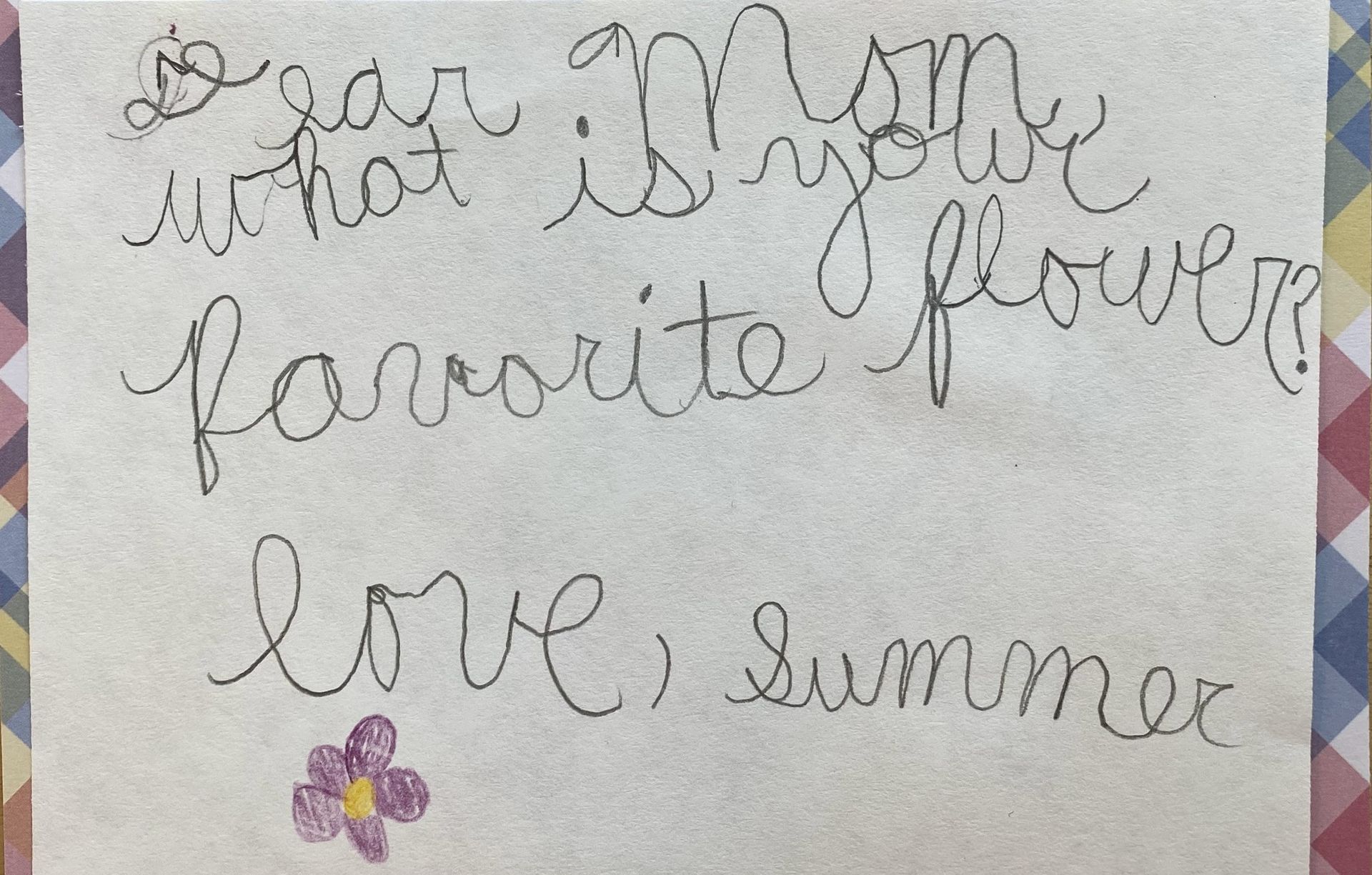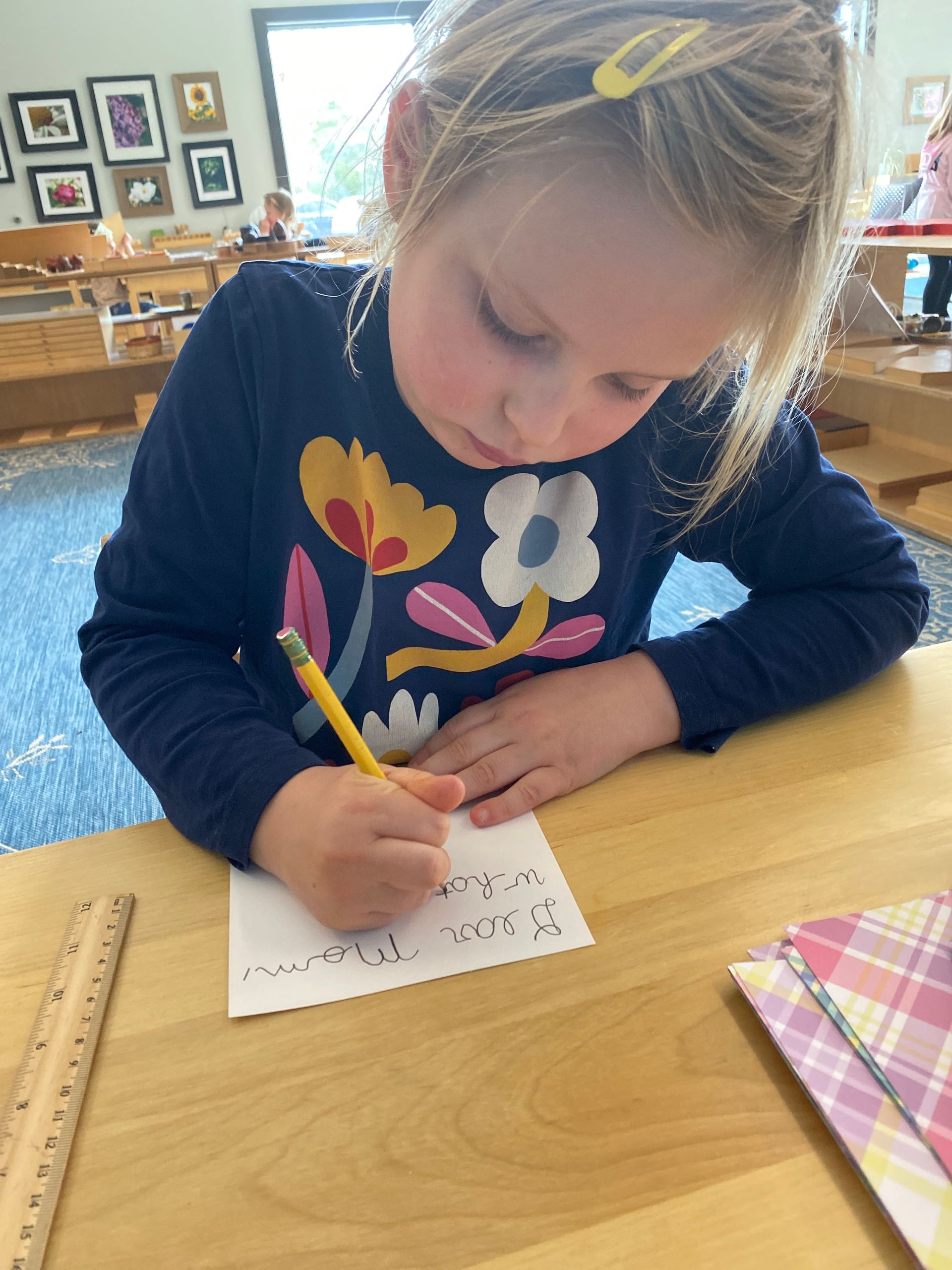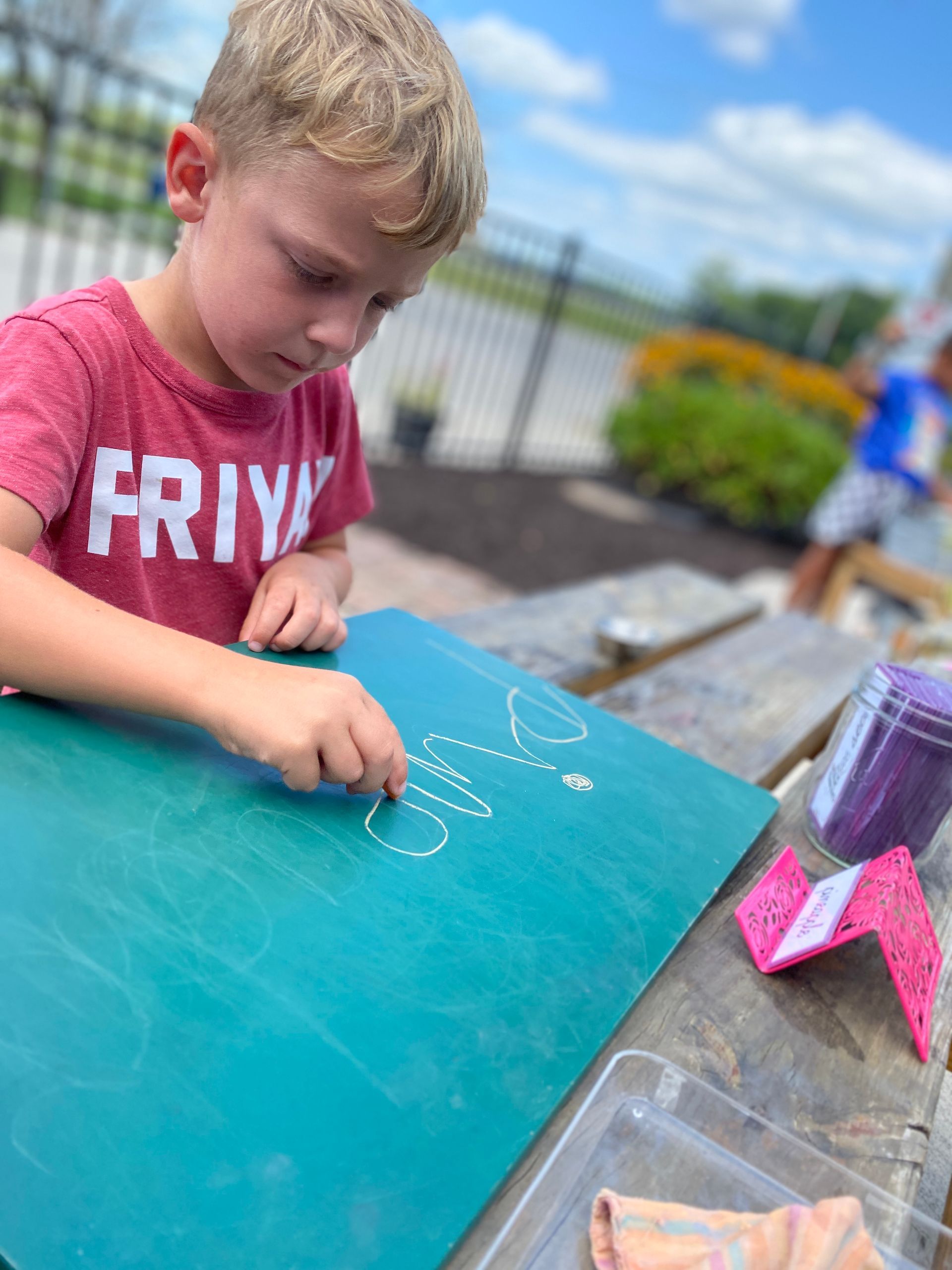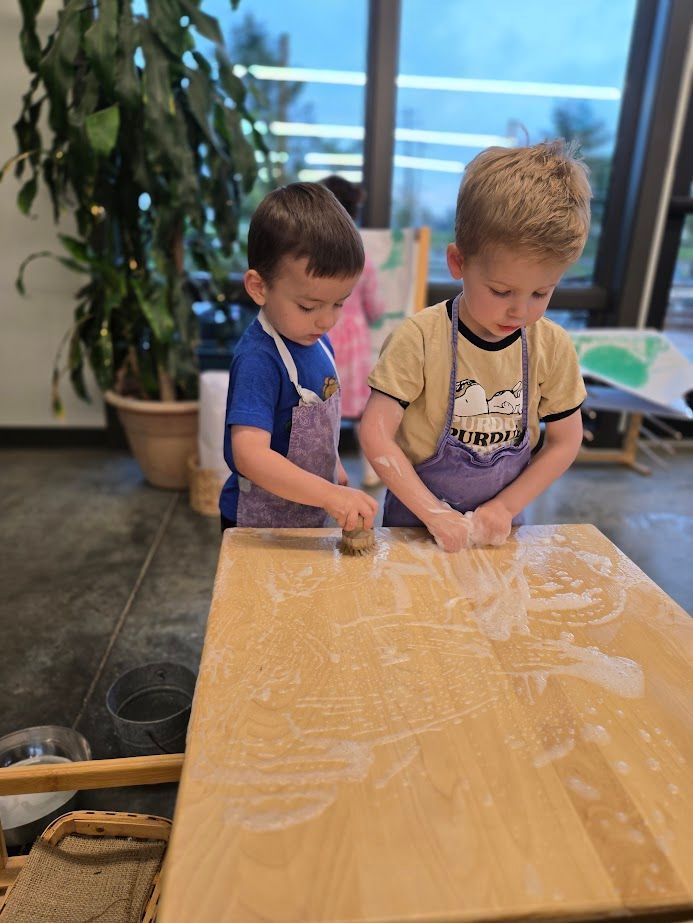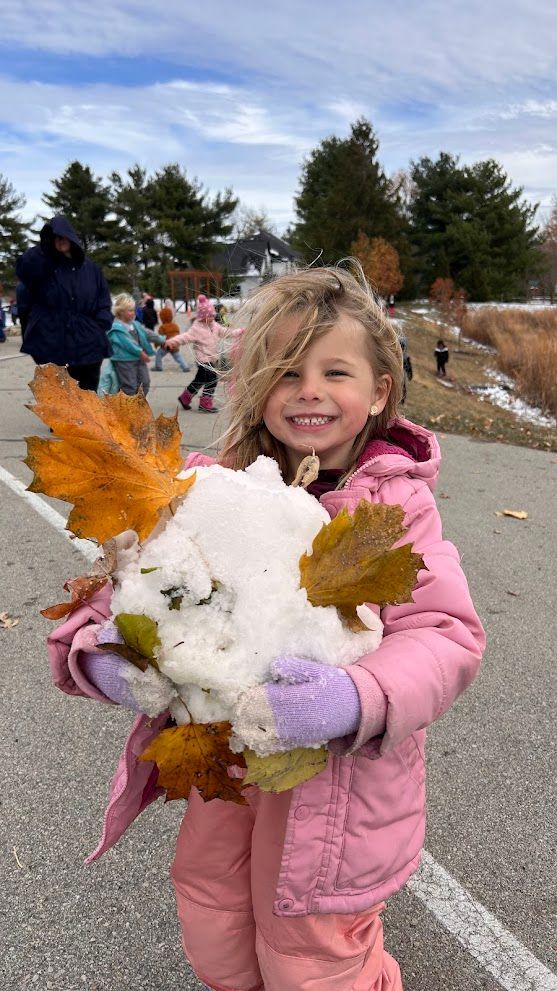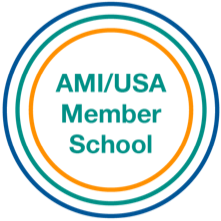“Driven by this inner sensibility children absorb language from their environment and miraculously develop it. This sensibility is so great during this period that if they were to be given another means of expressing language, such as writing, this other form of language will interest the child intensely. These children loved to write because they were in the sensitive period for language.”
MARIA MONTESSORI
It's interesting to note that many schools are transitioning from teaching children to write in cursive, to simply not writing in cursive at all. In our Montessori classrooms, children begin learning cursive writing prior to learning print. The benefits of learning cursive first are subtle but many. Have you ever noticed how the youngest child doodles or creates art? It's rarely in straight lines, but rather curved or spiral. It's easiest for a young child to make motions that mimic a circle or curved lines versus straight markings. It's also easiest for a young child's brain to work on the mechanics of cursive versus print. Think about having to write a capital "E" in print. The child needs to start at one point, pick up their pencil 4 different times and continue on the initial vertical line 3 different times, all the while notating which step to proceed to next. Now consider how to write a lowercase "e" in cursive. It's simple—one starting point; one ending point—all in one fluid motion before the writing instrument is picked up.
Writing preparation begins as the youngest primary or toddler student explores with the Practical Life exercises. Indirectly, these materials aid the child in strengthening the hands, arms and fingers. Exercises such as Wood Polishing, Table Washing and Apple Slicing all require the child to use her hands and arms. This builds muscle strength and dexterity in hands and prepares for the intricate fine motor of writing. A strong pincer grasp is further developed as she chooses the Sensorial materials that have small knobs for manipulation. These materials require the child to use the smallest knobs, forming the pincer grasp. Lightness of touch, translated later in writing, is first introduced with the Rough and Smooth Boards in the Sensorial area.
The first writing utensil a Montessori child will hold is a piece of chalk. A regular-sized chalk piece broken in half will aid the child in forming the needed three-point pincer grasp to hold the pencil properly. Use of the blank chalkboard allows the child to write as large as they need. The child may start with a simple sound, then connect the same sound together and before long connect different letters together and eventually will have begun to write an entire word. The chalkboard also allows mistakes to be easily removed so the child can start again. Writing will slowly be refined and become smaller as the child continues to practice, eventually writing on the lined chalkboard, blank paper and finally lined paper.
When the pencil grip is fully developed, the child will begin working with the
Metal Insets. The child will work with the Metal Insets in various ways, increasing his skills as he moves through the lessons. Children who are strong with the Metal Insets typically will demonstrate strength with their cursive writing as well. From here, there is an explosion in writing. This child will begin to write words or labels as found around the room. Writing the weekly snack list is a popular lesson that allows the child to list the needed items for next week's snack. They can then progress to writing sentences, stories and poems. The children will begin writing down anything and everything. Through repetition and practice, the child's cursive writing will become intricate and remarkably beautiful!

